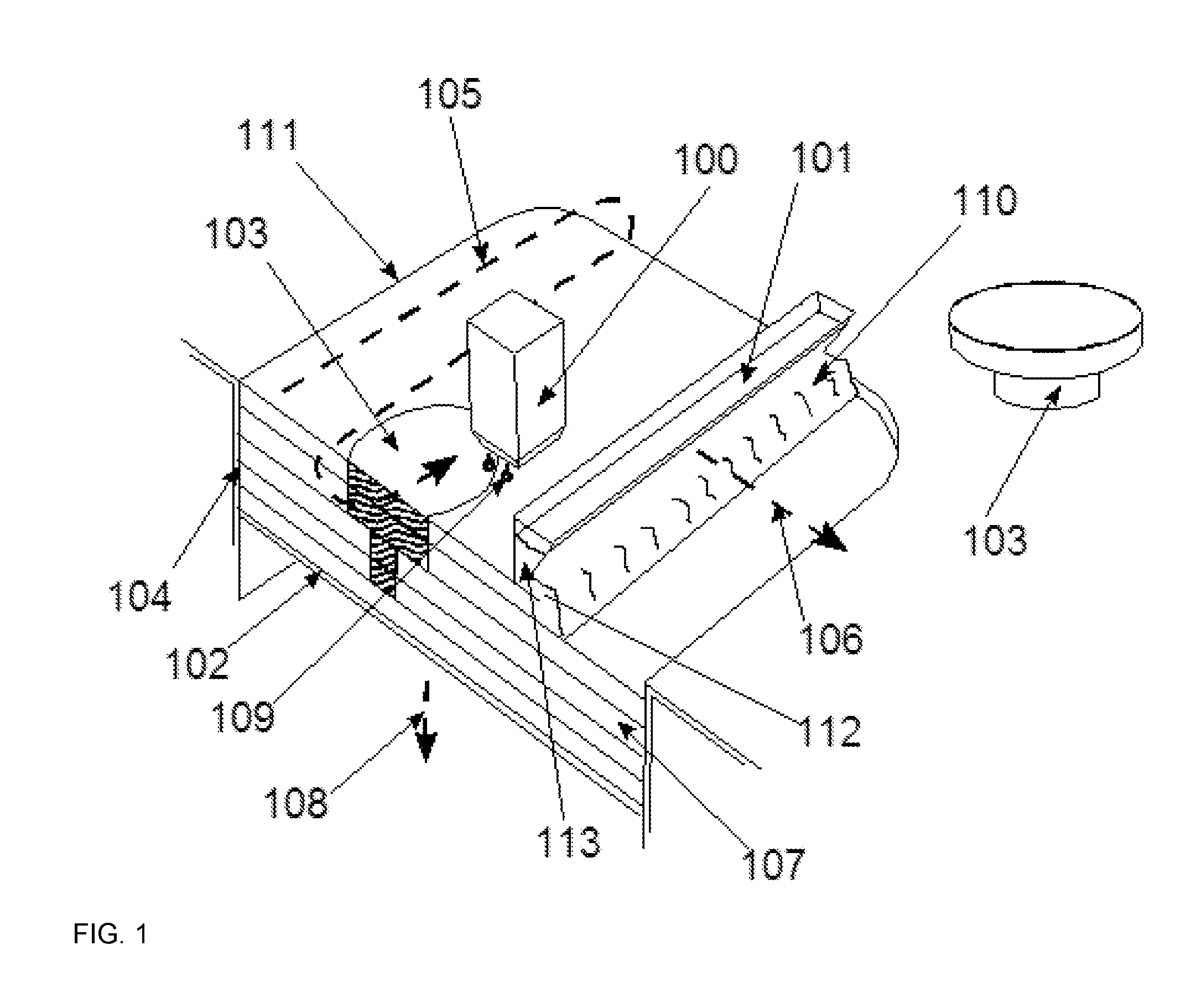3D infiltration method
- Summary
- Abstract
- Description
- Claims
- Application Information
AI Technical Summary
Benefits of technology
Problems solved by technology
Method used
Image
Examples
example
[0074]Producing a molded part using the method according to the invention
[0075]In the first step, a particulate material is applied in a thin layer to a building platform. In this preferred specific embodiment, the particulate material comprises silica sand (200) having an average grain size of 140 μm. Before being applied, this sand is dried until the residual moisture is less than 0.3 wt. %. A cement grain mixture (201), which is adapted to the pore space, is added to this sand mixture. The reactivity of this cement may be adapted. The layer thickness in this process is 0.25 mm.
[0076]Pyrogenic silicic acid in a proportion of 0.5 wt. % is also added to modify the flowability of the particle mixture. The cement may be, for example, a CA270-type calcium aluminate cement from Almatis or an Alphabond 300 from Almatis.
[0077]The binding fluid contains a silicate in order to adjust the printability. The latter is present in an aqueous solution. In addition Surfynol 440 surfactants are use...
PUM
| Property | Measurement | Unit |
|---|---|---|
| Time | aaaaa | aaaaa |
| Solubility (mass) | aaaaa | aaaaa |
| Heat | aaaaa | aaaaa |
Abstract
Description
Claims
Application Information
 Login to View More
Login to View More - R&D
- Intellectual Property
- Life Sciences
- Materials
- Tech Scout
- Unparalleled Data Quality
- Higher Quality Content
- 60% Fewer Hallucinations
Browse by: Latest US Patents, China's latest patents, Technical Efficacy Thesaurus, Application Domain, Technology Topic, Popular Technical Reports.
© 2025 PatSnap. All rights reserved.Legal|Privacy policy|Modern Slavery Act Transparency Statement|Sitemap|About US| Contact US: help@patsnap.com



